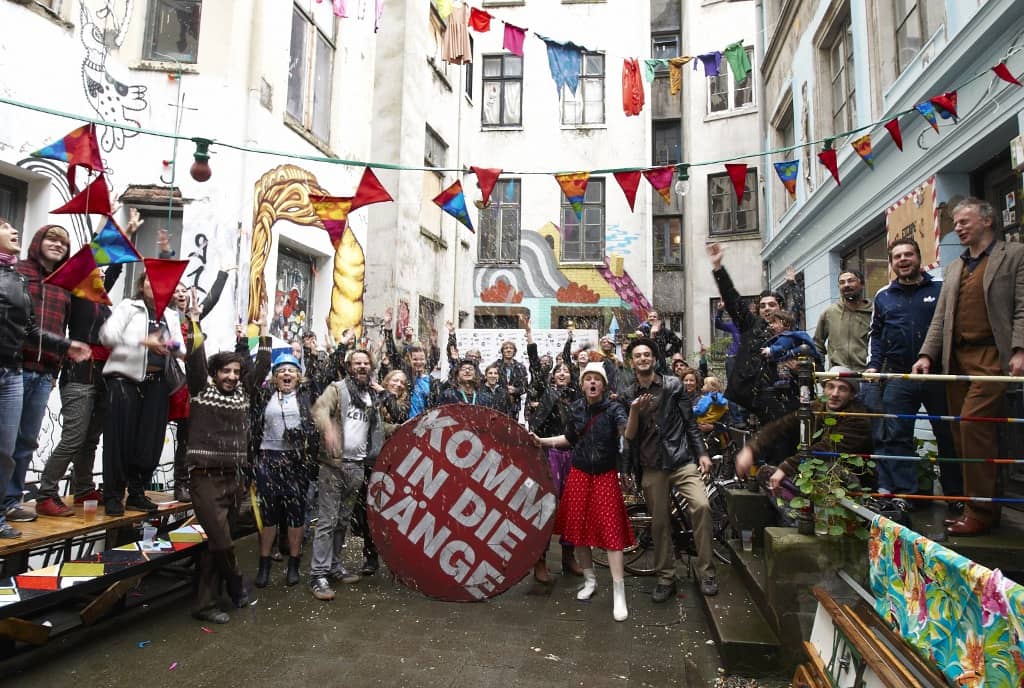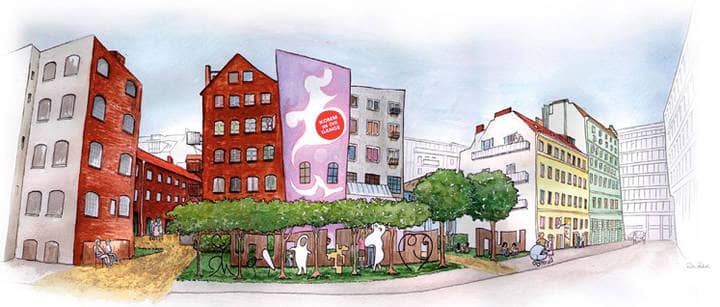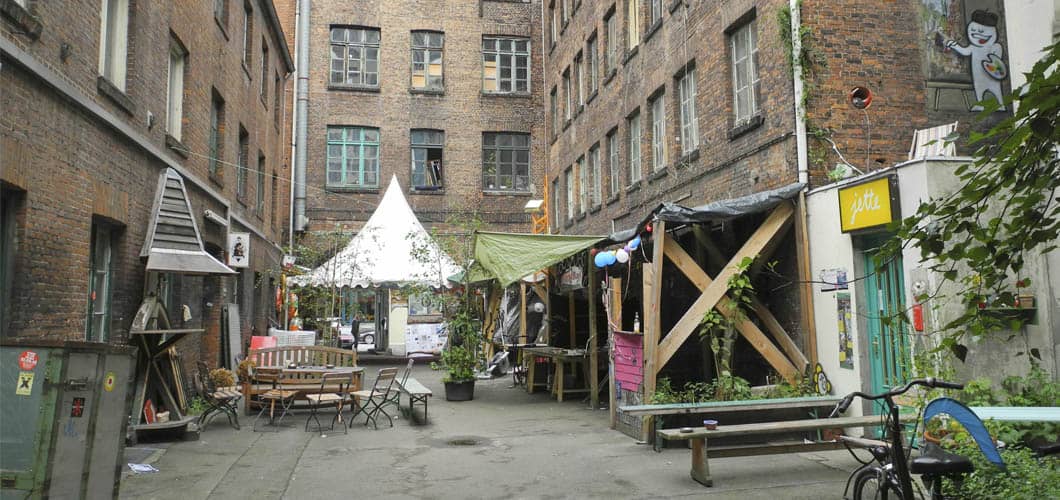
200 Artists, 12 Buildings, 1 Community: Gängeviertel Collective
Alanna from Loomio met Till Wolfer at POC21, a 6 week innovation camp in France focused on open source hardware for sustainability. Till was lending his expertise as an architect and designer. He stepped out for a moment to share how he collaborates back home with a 200-person artist collective occupying 12 buildings in Hamburg, Germany.
The Gängeviertel Story
After the financial crisis, artists all over Germany were feeling limited by lack of affordable spaces for creative works, and thinking about alternative use for empty buildings.
In Hamburg especially, rents were very high. In 2009, a large number of artists and activists decided to occupy buildings – but in a unique way.
We called it the ‘Policy of the Open Doors'. We occupied 12 houses in downtown Hamburg during a street party over a weekend.
They filled 12 empty buildings with art exhibits, and invited the public in – demonstrating the civic and cultural value of the arts, and the buildings themselves.
Years later, this vibrant community Gängeviertel – which means “the alleys” – is still going strong. Over 200 people live in the in re-purposed old harbor worker houses, now recognised as historical buildings and saved from demolition.

Each of the 12 houses acquired its own character: one for street artists, another for left-wing political activists, another for the fine arts practitioners. It's an island of creative community in a steel and glass central business district.
Around us there's just skyscrapers. The Google headquarters of Germany, the Facebook headquarters of Germany, and the Exxon Mobile headquarters of Germany are our direct neighbours, door-to-door…. It's a pretty special contrast.
How to Collaborate with 200 People
In addition to weekly general assemblies, Gängeviertel residents were using long email lists. But the volume became overwhelming, with dozens of emails per day. It just wasn't practical, so they sought a different online solution.
We use Loomio when there are more in-depth discussions that we can't just decide in the main assembly because there's more preparation needed. We transfer a question to Loomio, people discuss it for one or two weeks, and then it goes back to the main assembly.
One example of a decision that was much more practical to have on Loomio than in person was about the renovation of a bar and meeting place, the “living room of the whole collective”. There were lots of different opinions and details to consider. The architectural drafts were uploaded, and the community was able to reach consensus.
Till is now thinking more deeply about what could be achieved through online decision-making.
A discussion I'd like to put on Loomio is about what form of ownership we want for the occupied houses in the future, because that's what we're discussing with the municipality at the moment. Whether we buy it or we rent it, there's a lot of really detailed solutions, and that's what Loomio is really good for.
One reason it's so important for Gängeviertel to employ online collaboration effectively is the collective's need to meaningfully include large numbers of people.
When you think about a collective of 200 people, it's a question of scale. If you really want everyone to be part of a decision, it's almost impossible in the main assembly. The way some people speak is really outgoing and loud, so those that don't have the ability to speak up in public have a problem being heard. It's a lot easier when you have an online tool. Everyone has an equal say – it's perfect.
The other key factor is the complexity of the issues under discussion. With a diverse community of creative, free-thinking individuals taking on construction, legalities, hosting events, creative projects, and living together, a huge range of issues arise for discussion.
More complex decisions take too long in person. People get tired. You have a one hour meeting where no one listens. Sitting with 50 or 60 people in a room trying to find a decision about something – there are certain limits to that. I think you get more qualified decisions where more voices get heard, and the results are just better in the end.
The Inspiration of Actually Doing it

As soon as people come to the collective Gängeviertel, they walk in and immediately see that this is working completely differently. They get incredibly inspired to rethink the way they normally live.
While Till says it can be a bit strange to have tourist buses stopping at his house, he's proud to demonstrate a different way of life that they can see with their own eyes.
I think it's pretty cool to actually try to do it. Not to always leave it as a hypothetical space – ‘Oh, we might have a future where we are closer together, work more together, and share things more evenly' – but really to try to do it on an everyday basis.
See more on their website and Facebook page. And if you're ever in Hamburg, stop by and see for yourself – collective, creative living is not hypothetical, but really happening day to day at Gängeviertel.
